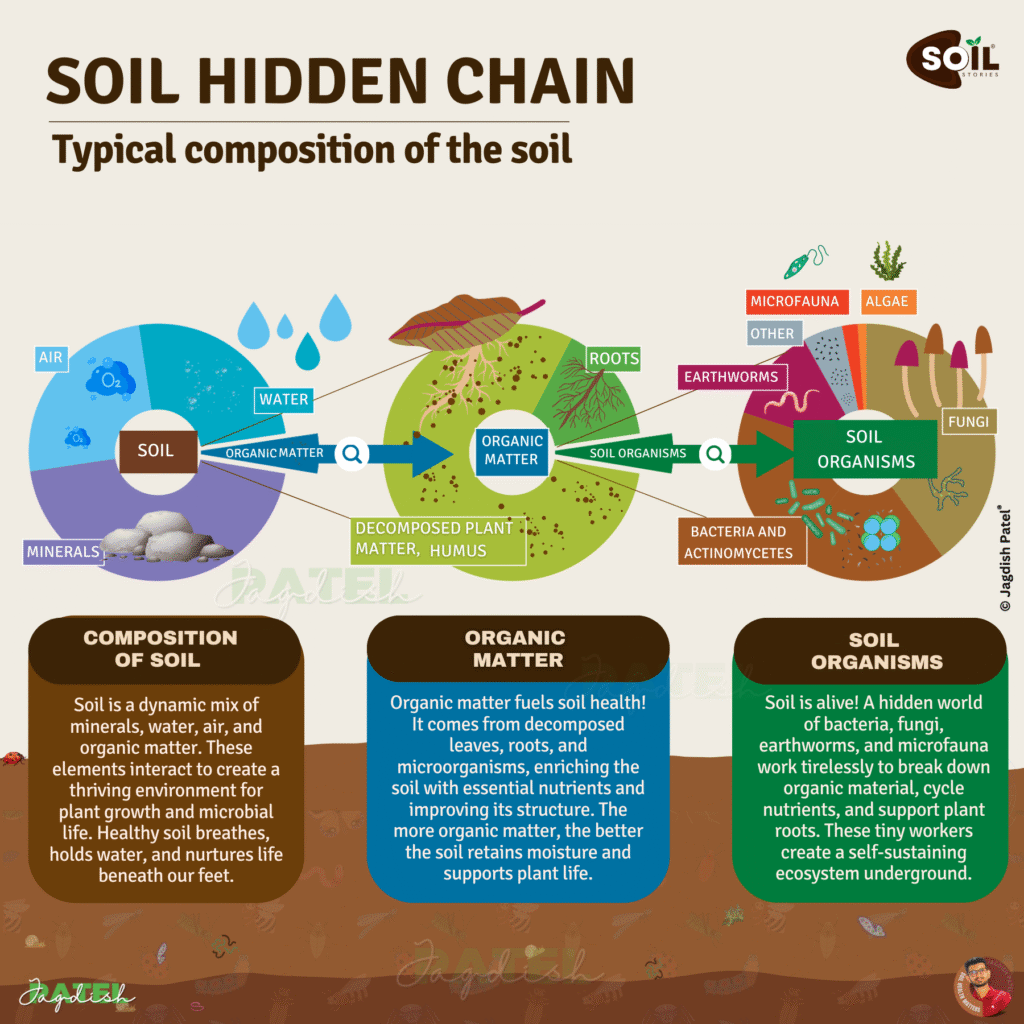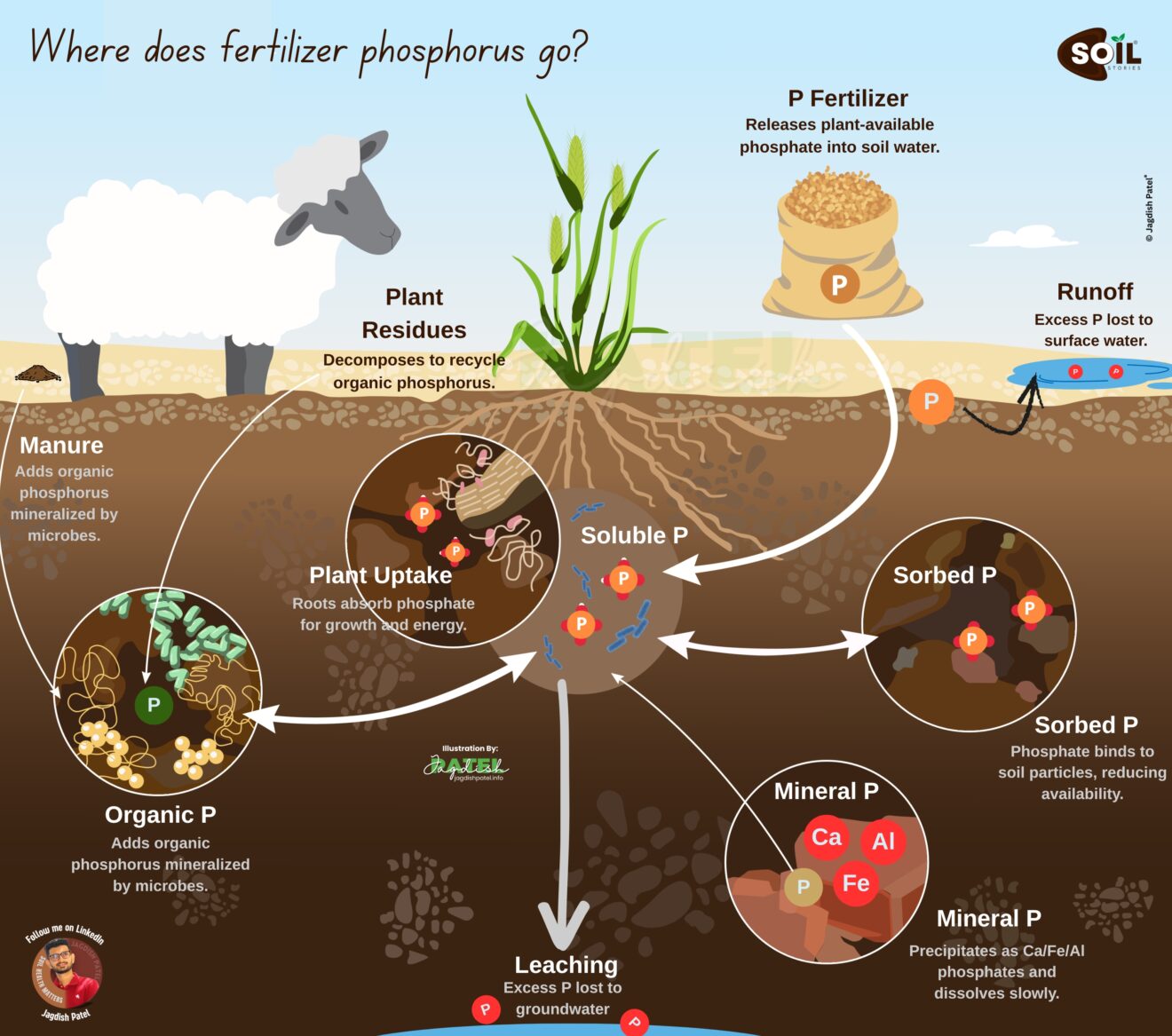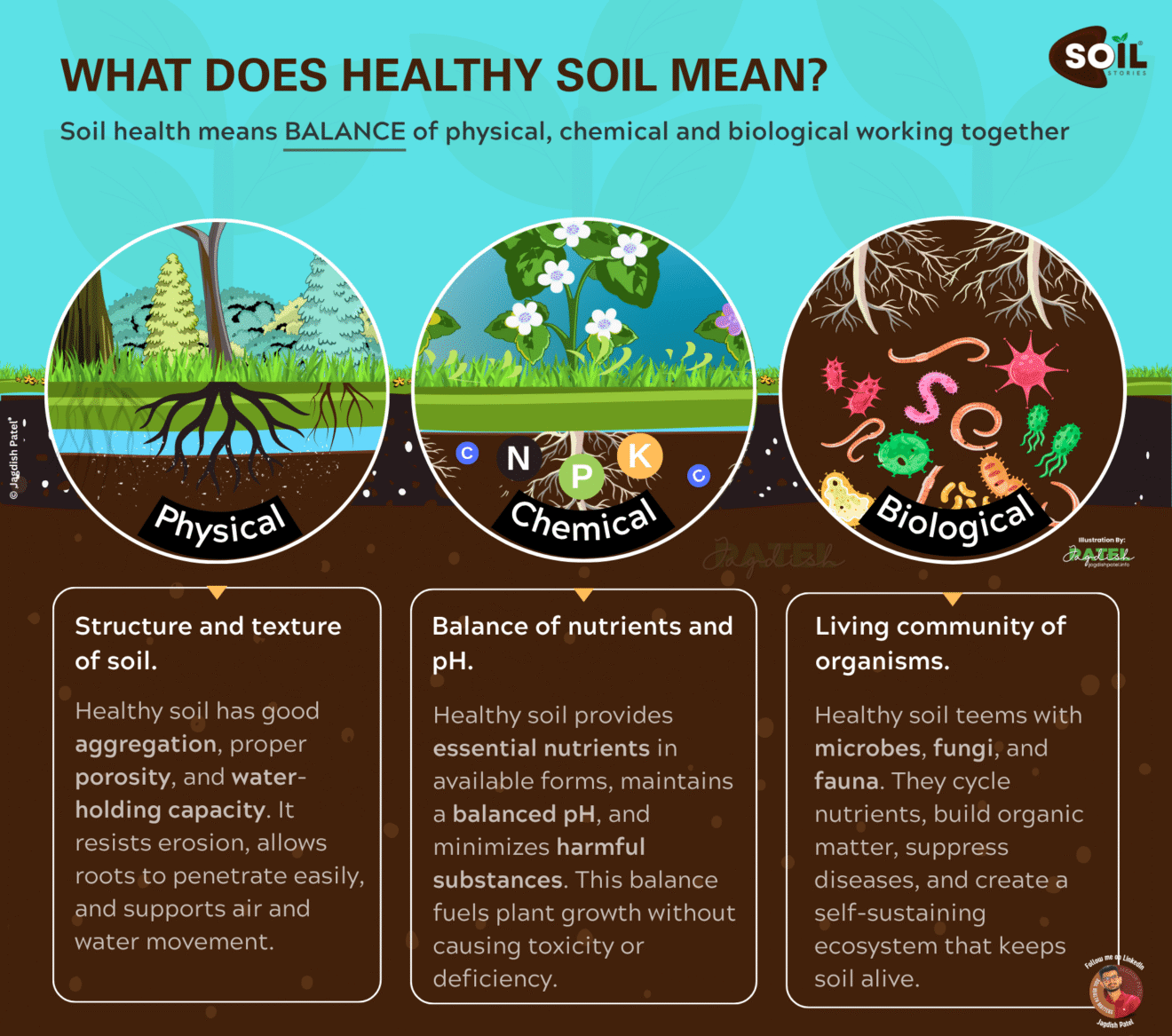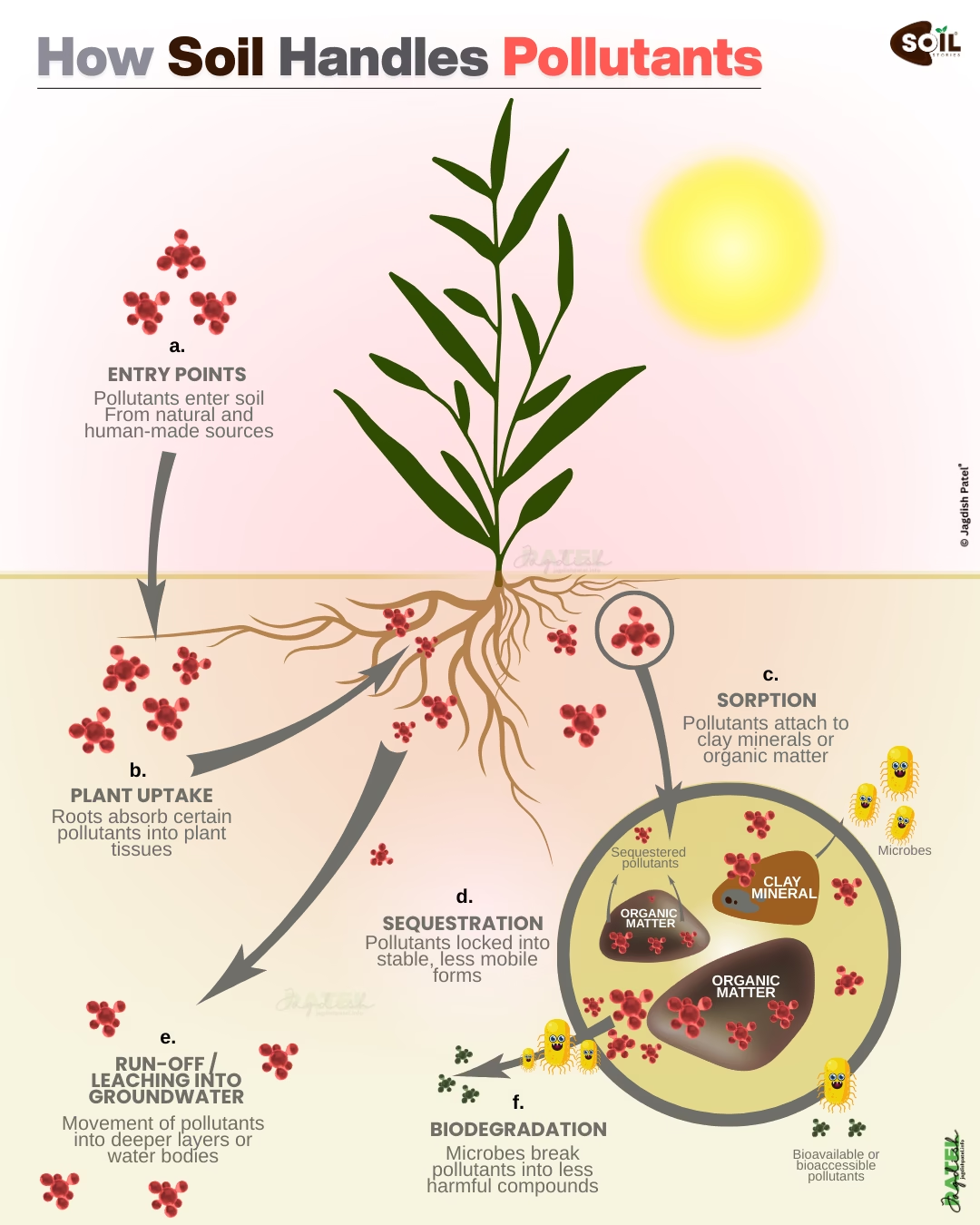The living soil is far more than just a substratum for plant growth; it is a dynamic community that sustains agriculture, biodiversity, and climate resilience. It is a living ecosystem, where minerals, water, air, organic matter, and countless organisms interact to create a thriving environment【FAO, 2015】. This intricate relationship is vital for maintaining soil health, ensuring sustainable agriculture, and supporting biodiversity.
In this article, we explore why the bond between soil, organic matter, and organisms is unbreakable, and what happens when this bond is disrupted.
Introduction to Living Soil
Living soil is not simply a mixture of sand, silt, clay, and organic matter. It is a vibrant ecosystem teeming with life: bacteria, fungi, earthworms, insects, algae, and other microorganisms. Together, these organisms decompose organic matter, recycle nutrients, and support plant growth【Wall et al., 2012】.
The presence of this underground workforce is essential for:
- Maintaining fertility
- Supporting biodiversity
- Promoting ecological resilience
In other words, soil is not inert, it is alive.

Key Components of Living Soil
1. Microorganisms
Bacteria and fungi are the engines of soil health. They break down organic matter, releasing essential nutrients for plants【Whitman et al., 1998】. This process is central to nutrient cycling and long-term fertility.
2. Organic Matter
Decomposed plant and animal material serves as food for microbes while improving soil structure【USDA NRCS, 2014】. Organic matter enhances porosity, retains water, and allows for healthy root growth. A 1% increase in soil organic matter can help soil hold an additional 20,000 liters of water per hectare, boosting drought resilience.
3. Worms and Insects
Macrofauna such as earthworms aerate the soil, enhance drainage, and mix nutrients. Their burrows improve infiltration and create channels that roots and water can easily follow.
4. Minerals and Nutrients
Nitrogen, phosphorus, and potassium are critical elements for growth, but they only become useful when soil organisms release them through biological processes. Without life, nutrients remain locked away.
The Soil Food Web: A Delicate Balance
The soil food web describes the network of relationships between roots, microbes, fungi, protozoa, nematodes, and earthworms【Ingham, 2020】.
- One organism’s waste becomes another’s food.
- Beneficial fungi bind particles into aggregates.
- Microfauna regulate microbial populations, preventing imbalances.
This living network ensures efficiency: no resource is wasted, and nutrients cycle seamlessly. When disturbed, the balance collapses, fertility declines, pathogens spread, and soil loses resilience.
Benefits of a Healthy Soil Food Web
A thriving soil food web delivers multiple benefits:
Nutrient Cycling
Microbes break down complex organic matter into simple, plant-available nutrients. This ensures that crops get steady access to nitrogen, phosphorus, and micronutrients.
Soil Structure
Fungi produce compounds like glomalin that bind particles, improving structure. This allows water to infiltrate more easily while reducing erosion.
Disease Resistance
Beneficial microbes shield roots by colonizing surfaces, making it harder for pathogens to invade. Studies show diverse soils naturally suppress diseases such as Pythium and Rhizoctonia【van Bruggen & Semenov, 2000】.
Carbon Sequestration
Soil stores 2–3 times more carbon than the atmosphere【IPCC, 2019】. Fungi and microbial residues play a central role, locking carbon into stable organic matter and mitigating climate change.
The Role of Organic Matter
Organic matter is the currency of the soil economy. It feeds microbes, improves structure, and regulates nutrient and water cycles.
Benefits include:
- Continuous food source for soil life
- Greater porosity and aeration
- Habitat for microbial diversity
- Buffer against nutrient leaching
Adding compost, manure, or cover crops replenishes organic matter, strengthening soil’s ability to support crops and ecosystems.
👉 Learn more about restoring biodiversity from the ground up.
The Impact of Breaking the Bond
When the bond between soil, organic matter, and organisms is broken, the consequences are profound.
Effects on Ecosystems
- Loss of biodiversity: Many organisms vanish when soil is degraded.
- Reduced plant health: Nutrient cycling slows, leaving crops vulnerable.
- Soil degradation: Erosion, compaction, and reduced water holding capacity exacerbate droughts and floods.
Effects on Agriculture
- Lower yields: Degraded soils produce less food and poorer quality.
- Higher costs: Farmers depend more on synthetic fertilizers and pesticides, increasing expenses and environmental harm.
Effects on Climate
- Rising emissions: Degraded soils release stored carbon.
- Agricultural soils have the potential to remove up to 5.3 gigatons of CO₂ annually — more than 10% of global emissions【IPBES, 2018】.
Breaking the bond turns soil from a carbon sink into a carbon source.
Practices to Maintain the Bond
Restoring and protecting living soil requires farming with nature. Proven practices include:
- Add Organic Matter: Compost, manure, or crop residues provide food for microbes.
- Cover Crops: Shield soil, fix nitrogen, and add biomass.
- Crop Rotation: Break pest cycles and diversify residues.
- Minimize Tillage: Protect aggregates and fungal networks.
- Agroforestry: Trees stabilize soil and enhance biodiversity.
These practices rebuild the soil → organic matter → organism cycle, ensuring resilience and productivity.
Conclusion
The bond between soil, organic matter, and organisms is unbreakable because it is the living soil ecosystem itself. It fuels harvests, sustains biodiversity, regulates climate, and supports human health.
When this bond is nurtured, soils thrive and ecosystems flourish. When it is broken, resilience disappears and costs rise.
Protecting soil is not just about crops. It is about honoring the living chain that sustains life on Earth.
References
- FAO (2015). Status of the World’s Soil Resources. Food and Agriculture Organization of the UN.
- IPCC (2019). Climate Change and Land. Intergovernmental Panel on Climate Change.
- IPBES (2018). Land Degradation and Restoration Report.
- Wall, D. H., et al. (2012). Soil Ecology and Ecosystem Services. Oxford University Press.
- Whitman, W. B., et al. (1998). Prokaryotes: The unseen majority. PNAS, 95(12), 6578–6583.
- Van Bruggen, A. H. C., & Semenov, A. M. (2000). Biological indicators for soil health and disease suppression. Applied Soil Ecology, 15(1), 13–24.
- USDA NRCS (2014). Soil Health Key Points.




